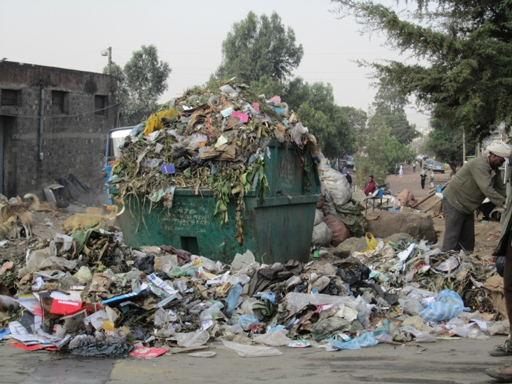9.4.2 Health and environmental impacts of transfer stations
Transfer stations can be environmentally damaging, as shown in Figure 9.6. In contrast, a high-quality site with good fencing, hardstanding, lighting and an office/amenity building (Figure 9.7). will have little environmental impact. Of course, all waste transfer stations smell to some extent, but even this can be minimised by ensuring that waste is not stored for long periods.


Consideration also needs to be given to the transfer station staff, who will be exposed to all the waste hazards (including physical damage from sharp items, human faecal and other pathogens, heavy metals and dust and other chemicals). They should be provided with, and required to use, protective equipment (boots, gloves, hard hats, dust masks, high visibility jackets and safety glasses). An amenity room should also be provided for meal breaks and other breaks and handwashing facilities provided.
9.4.1 Types of transfer station
